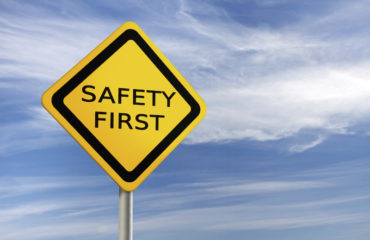Have you ever been driving and started to feel sleepy or even dozed off, only to suddenly find yourself heading towards the ditch to your right or the oncoming traffic lane to your left? At some point in our lives, it has happened to many of us. Thankfully, the great majority of us did not crash. However, many people do crash, and some of these crashes result in serious injuries, even death. This article will discuss the importance of sleep and how to avoid drowsy driving.
November 3-10, 2013 is Drowsy Driving Prevention Week, a public awareness campaign to educate everyone about drowsy driving and ways to prevent it. While difficult to get an accurate estimate, it is believed that approximately 16.5 percent of fatal crashes involve a drowsy driver.[1] Clearly, a person driving on a lack of sleep is someone looking to be in a crash. Just like alcohol, sleep deprivation impairs our ability to drive safely. Being awake for 18 hours and then driving is similar to driving at a .05 BAC (Blood Alcohol Content). Twenty-four hours without sleep is comparable to trying to drive at a .10 BAC, which is over the per se BAC limit for alcohol.[2]
Who Is Most At Risk?
Often the focus of drowsy driving is on commercial drivers not getting enough sleep due to scheduling and traveling long distances, or people who work the night shift or long hours. Of course, someone who uses sedating medications would be at risk, as is someone with a sleep disorder. The bottom line is that any driver who hasn’t gotten enough sleep is at risk of a crash. Whether you are a parent of a newborn whose sleep is interrupted several times during the night, or a twenty-something person burning the candle at both ends, if you don’t get enough sleep, drowsy driving can happen to you.
It is easy to get into a rush-rush attitude and skimp on sleep. You might start to feel like a push-me-pull-you from Dr. Doolittle’s menagerie and say that you’ll sleep on the weekend or when it slows down, or might even say you’ll sleep when you’re dead. None of these comments help, and driving with a lack of sleep may hasten your death, or a someone else’s. Ultimately, our bodies will stage a revolt, quit working, and make us sleep.
One type of sleep that can happen is called micro-sleep. When deprived of sleep, bodies can do micro-sleeps—brief, unintended episodes of sleep that we are not even aware happened. The more the sleep depravation, the greater the likelihood micro-sleep will occur. When it happens, we don’t respond to external stimulus, such as a traffic light or brakes, even though our eyes may be open. Our bodies need sleep and at some point – enough is ENOUGH; it is time to sleep.
False Cures for Drowsy Driving
So what can you do to counteract drowsy driving? At times you hear people suggest:
- Rolling down the window,
- Turning the radio up loud, or
- Drinking coffee.
None of these suggestions are ultimately effective. With coffee, you might get a short burst of alertness, but if you are sufficiently tired, you can still have micro-sleeps and not respond when required.
Other people think they can tell when they’re about to fall asleep or believe that they don’t need much sleep. Also false—the human body needs sleep and whether you know it or not, it will happen. Most people are not aware how drowsy driving affects their driving abilities, even without falling asleep. Interestingly, in one study a driver who was in a crash denied falling asleep, stating he must have just blacked out. Another driver stated: “I wasn’t drowsy, I just feel asleep.”[3] The need to deny our sleepiness is strong. Growing up, how many times as a child did we get to stay up late, maybe watching TV, and then start to fall asleep? Remember what our parents would say? “Looks like you’re sleepy. Time for bed.” And what was the automatic reaction? “No, I’m not. I’m wide awake;” even though we were sleepy. But this isn’t about watching TV. It is about driving a deadly weapon.
The Danger Signs
There are a number of indicators of driving drowsy – things that if you think about beforehand you’ll recognize, such as:
- Yawning frequently
- Trouble keeping your eyes open
- Memory lapses or daydreaming
- Drifting from one lane to another or onto the rumble strips
- Missing a road sign
When these signs happen, you have to recognize them right away for what they could mean – that you need sleep.
Tips To Stop It
The only “cure” to drowsy driving is getting enough sleep. Keep in mind that sleep is a necessity, not a luxury. Adults need 7 to 9 hours of sleep a day and adolescents need 9 to 10 hours.
If you are driving and you notice the indicators, it is time to pull over at the next exit or rest stop and either get some sleep for the night, or at the very least take a nap. If you have an alert passenger with you, let that person drive. And as a general rule, when taking a long trip, be sure to schedule regular breaks every couple of hours to help remain alertness.
The best strategy is to plan before starting to drive. The night before going on a trip be sure to get a good night’s rest. Our bodies need sleep to function properly. As adults, we cannot ignore the signs of sleep deprivation. As adults we can no longer automatically respond “Not me. I’m not sleepy. I’m wide awake” when in reality we are tired. It puts all of us at risk. It is time to take “action” and go to sleep.
Check out what happens to a sleepy driver:
[1] How to Avoid Drowsy Driving. AAA Foundation for Traffic Safety. Washington DC. 2012
[2] Drowsy Driving: Asleep at the Wheel. Centers for Disease Control (CDC), obtained from: http://www.cdc.gov/Features/dsdrowsydriving/index.html
[3] National Sleep Foundation White Paper on Drowsy Driving. Obtained from: http://drowsydriving.org/2012/11/national-sleep-foundation-white-paper-on-drowsy-driving/
Related articles
- Less Than 6 Hrs Of Sleep Leads to Drowsy Driving in Mornings: Study (medindia.net)
- Drowsy Driving Becoming Dangerous Problem (philadelphia.cbslocal.com)







